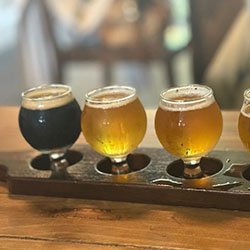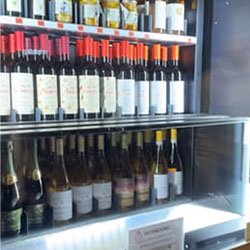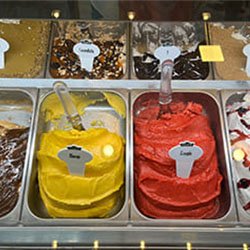
It’s on the front of the packaging and is labeling to do with the contents. It was officially announced in 2020 by the Brazilian Health Regulatory Agency (ANVISA) and came into effect on October 9, 2022. When added sugar, saturated fat, or sodium content exceeds the standard amount, it’s mandatory to have labeling saying, "Alto em açúcar adicionado, Alto em gordura saturada, Alto em sódio". (“High in added sugar, High in saturated fat, High in sodium.) “Alto” means high.
The standard amounts are as follows.
Added sugar (g): solid (100 g) ≧ 15, liquid (100 g) ≧ 7.5
Saturated fats (g): solid (100g) ≧ 6, liquid (100g) ≧ 3
Sodium (mg): solid (100 g) ≧ 600, liquid (100 g) ≧ 300

As usual, there is still nutritional information on the back of the packaging, but the four things that are different from before are that the total amount of sugar and the amount of added sugar are included, and the analysis units have been made a uniform 100 grams for solid foods and 100 milliliters for liquid foods. Also, the percentages of the foods compared to daily intake (%VD) are included. And, if a single package contains more than one product, the number and weight of each item are included.
The reason for these changes is that 40% of consumers found nutrition labeling difficult to understand. Apparently, the text in the labeling was small and difficult to read, and it required consumers to look at the labeling and do calculations. So, the Brazilian Health Regulatory Agency (ANVISA) has focused on standardizing food nutrition labels and making the text clear and easy to read.

Along with a picture of a magnifying glass, labels are printed to indicate for example that the product contains added sugar above the standard, on the front of the product, where consumers' eyes go straight away.
The picture of a magnifying glass on the front is intended to reduce problematic health symptoms around the world, such as obesity, high blood pressure, and excessive blood fat content. Such labeling is being voluntarily implemented in various countries, but apparently it was Chile that first made it mandatory, in 2016. Then Uruguay, Peru, and in 2020, Mexico did too.
These labeling changes have only recently been mandated in Brazil, so their effects will only be known in a few years, but in order for them to succeed, it will not only be necessary to mandate this magnifying glass symbol, but also to take a broad range of actions, such as reducing the promotion and advertising of foods with the magnifying glass on them, eliminating such foods if possible, imposing higher taxes on such foods, and focusing on nutrition education for students in schools.
I don't think this means you should never eat foods with the magnifying glass symbol on them. Otherwise, most of the commercially available snacks and confectionery would disappear. I think it's about eating less of these foods, less often. After all, the purpose is to encourage people to make better food choices, to maintain their health.
When I do the shopping at the supermarket, actually many of the items I pick up have the magnifying glass on them, which is a bit of a concern. Sometimes I think it's better to buy fewer of them and put some back on the shelf.
Do you have labeling like this in your country? Is it a concern for you?






























































